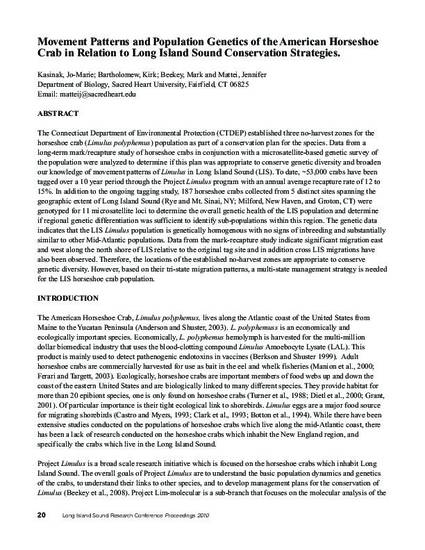
The Connecticut Department of Environmental Protection (CTDEP) established three no-harvest zones for the horseshoe crab (Limulus polyphemus) population as part of a conservation plan for the species. Data from a long-term mark/recapture study of horseshoe crabs in conjunction with a microsatellite-based genetic survey of the population were analyzed to determine if this plan was appropriate to conserve genetic diversity and broaden our knowledge of movement patterns of Limulus in Long Island Sound (LIS). To date, ~53,000 crabs have been tagged over a 10 year period through the Project Limulus program with an annual average recapture rate of 12 to 15%. In addition to the ongoing tagging study, 187 horseshoe crabs collected from 5 distinct sites spanning the geographic extent of Long Island Sound (Rye and Mt. Sinai, NY; Milford, New Haven, and Groton, CT) were genotyped for 11 microsatellite loci to determine the overall genetic health of the LIS population and determine if regional genetic differentiation was sufficient to identify sub-populations within this region. The genetic data indicates that the LIS Limulus population is genetically homogenous with no signs of inbreeding and substantially similar to other Mid-Atlantic populations. Data from the mark-recapture study indicate significant migration east and west along the north shore of LIS relative to the original tag site and in addition cross LIS migrations have also been observed. Therefore, the locations of the established no-harvest zones are appropriate to conserve genetic diversity. However, based on their tri-state migration patterns, a multi-state management strategy is needed for the LIS horseshoe crab population.
